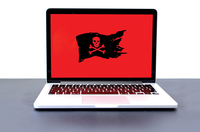
Photo by Michael Geiger on Unsplash
Ransomware: Prepare for emergencies
Cyber Threat
Ransomware was regularly responsible for the failure of large and critical infrastructures in 2020. Protection against ransomware Trojans once again, or still, has to be the focus of IT security this year. Unfortunately, no panacea is yet in sight, but some security approaches are always worth testing.
The 2020 publicly known attacks with ransomware mainly relied on encryption Trojans. Although the perception was that mostly public institutions were affected, the number of companies affected also increased significantly. The sad highlight of an attack against University Hospital Düsseldorf was the death of an emergency patient who could not be admitted and could only be treated an hour later in a distant hospital.
Blackfog [1] has compiled the publicly known ransomware incidents in different sectors. Most affected were manufacturing, services, and government. The figures are from the first to third quarters of 2020, with the United States accounting for more than half of all cases. Overall, a significantly larger number of unreported cases can be assumed.
The great financial risk that ransomware poses to companies can be seen from the estimated damage of more than $20 billion in 2021 [2]. In individual cases, a successful ransomware attack can permanently cripple an entire company and even ruin it, making it important to detect an ongoing ransomware attack as soon as possible.
Insidious Blackmailers
Blackmail Trojans prevent the use of a computer under a pretext and demand a ransom to release the computer. The modern variants on blackmail Trojans more typically have to do with undesirable encryption.
The malware can enter your infrastructure in different ways: attached to emails, in manipulated downloads, or on USB sticks that employees bring into a company. Once
...Buy this article as PDF
(incl. VAT)
Buy ADMIN Magazine
Subscribe to our ADMIN Newsletters
Subscribe to our Linux Newsletters
Find Linux and Open Source Jobs
Most Popular
Support Our Work
ADMIN content is made possible with support from readers like you. Please consider contributing when you've found an article to be beneficial.





